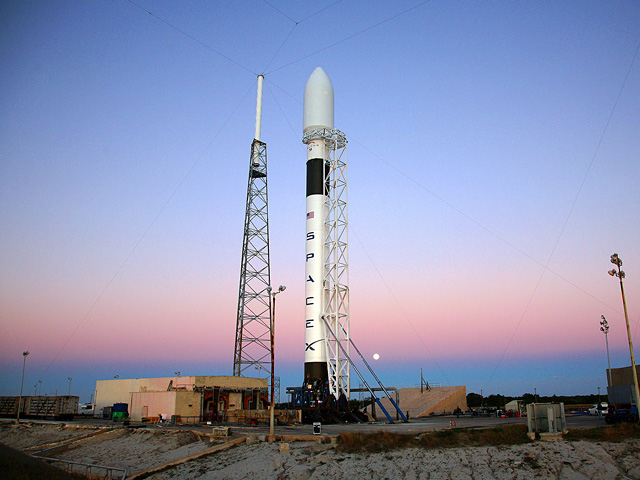
The three perfectly successful launches of the new American Falcon 9 launch vehicle developed and operated by SpaceX — a company founded in 2002 in a garage in California — pose many questions.
Indeed, it is the first time in history that a totally private company has successfully flown a space launch vehicle on its first try. What is more, this was performed with an approach at odds with what had been done previously.
These successful launches pose a challenge, especially considering SpaceX announced its desire to dominate this sector. This comes at a time when Europe has begun, at France’s initiative, the development of the future Ariane 6 rocket, which aims to enter service at the beginning of the next decade and will therefore be competing with SpaceX launch vehicles.
Particularly Attractive Prices
Europe will have to make a decision in the coming months concerning its final commitment to the Ariane 6. Meanwhile, SpaceX has just demonstrated that it could hold its own with launches marketed at particularly attractive prices.
If one compares the SpaceX launch vehicle to its competitors, it differs in three major ways. First is its perfect adaptation to the launching of governmental payloads, including NASA and Department of Defense satellites. These make up a large part of SpaceX’s orders and even more of its income, to the extent that the U.S. government agrees to pay more for its own launches than what would be charged to commercial customers.
Next is [SpaceX’s] smaller size and its ease of implementation, which has led to particularly low operating costs and has made it amazingly competitive in the area of commercial satellite launches; the last two launches of the Falcon 9 have permitted the United States to rebound in this market, from which it had been absent for several years due to lack of competitiveness and unavailability of conventional launch vehicles.
Last is its technical and industrial organization which, from the beginning, has been designed with the goal of minimizing development and exploitation costs: Instead of using cutting-edge technology for its launch vehicles, the Falcon 9 uses engines with proven technology that are easy to develop and inexpensive to produce. The launch vehicle is also manufactured by a very limited number of subcontractors, which limits the costs of production.
The Space Race
In the past 10 years, the United States has halted the development of several conventional launch vehicles after having poured several billion dollars into them. But where conventional methods have failed, the Falcon 9 may well put [the U.S.] back at the top of the space race, although [the United States] does share the [Falcon 9] with Russia and China for government launches and Europe is leading in the area of commercial launches.
Furthermore, SpaceX has some launch vehicle developments in the works this year that could enable it to fly an even more powerful version that would be reusable in the long term, thus lowering launch prices even further. Not even the space shuttle was reusable, even though it was designed with this in mind!
Such a development would have especially heavy consequences for Europe, with the loss of market share on the one hand and on the other, the weakening of our model of autonomous access to space based on the commercial success of our launchers, given the relatively limited number of European government satellites to launch.
These are the findings which have helped define the specifications for the Ariane 6, which are akin to those of the Falcon 9: perfect adaptation to the launching of European government satellites, facilitated launching of commercial satellites, simplified design and better industrial organization in order to decrease launch costs.
We Must Respond
It is clear that the United States is challenging us to compete by leading the way with a system that puts into practice all these recommendations. While for years we had feared competition from emerging countries with their low labor costs, now we face competition from the United States and its ability to innovate.
This situation is not unlike what we experienced in the early 1970s with the computing world. We were shocked by the emergence of new entrants who all shared a common feature: They had started in garages in California. Nearly 40 years later, the industry of space launch vehicles, which is regarded as a sovereign industry such as that of information technology in the 1970s, might well see the same disruption.
Europe has earned its supremacy in space launches. The Ariane 5 is currently the best booster rocket in the world due to its reliability, having conquered launch after launch since 2003; it will continue to be so because Europe has decided to support its operation and its adaptations to the market.
With that in mind, we must respond to the challenge that we face with SpaceX and move forward without delay in the development of the Ariane 6. It is not a question of developing a new Ariane launch vehicle, but rather of reinventing Ariane development by taking the same turn taken by information technology in the 1970s and recently by SpaceX. This is the lesson we have learned from the garages of California.

Leave a Reply
You must be logged in to post a comment.